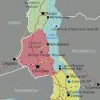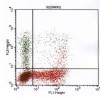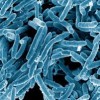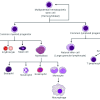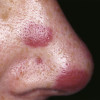Demographic and immune correlates of human herpesvirus 8 seropositivity in Malawi, Africa
Abstract
BACKGROUND: In the USA, human herpesvirus 8 (HHV-8) is associated with Kaposi’s sarcoma (KS) and HIV infection. We examined HHV-8 seroprevalence in a Malawian cohort, and assessed its relationship with HIV, KS, demographic characteristics, and immune findings.
METHODS: In 1997 and 1998, blood samples were obtained from 272 hospitalized Malawian patients, for whom demographic information was obtained, and 24 healthy volunteers without demographic data.… Read more
